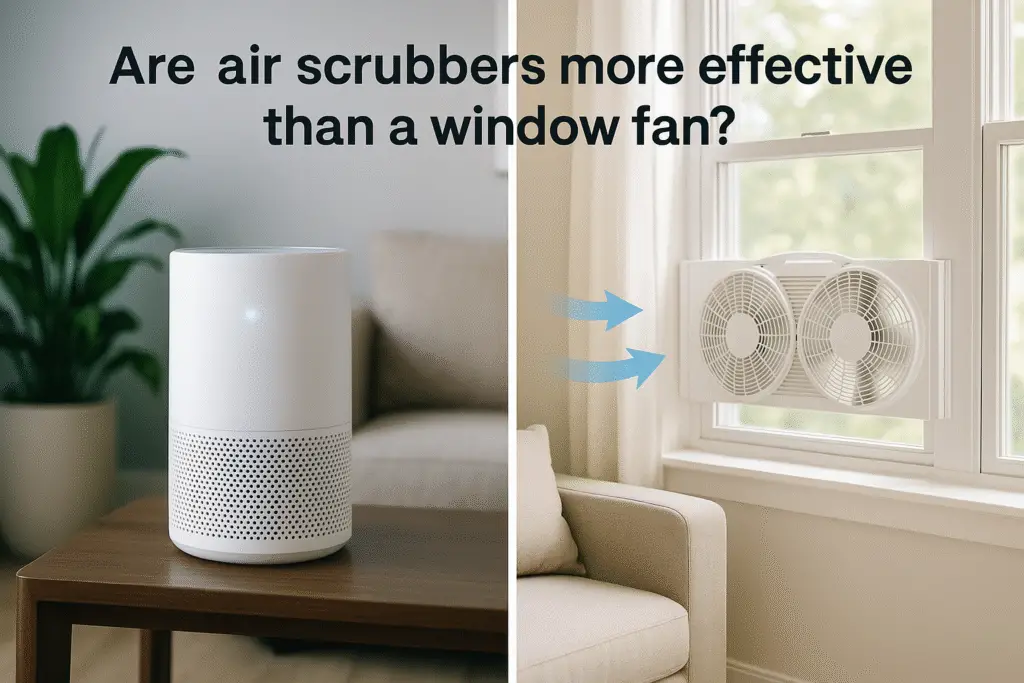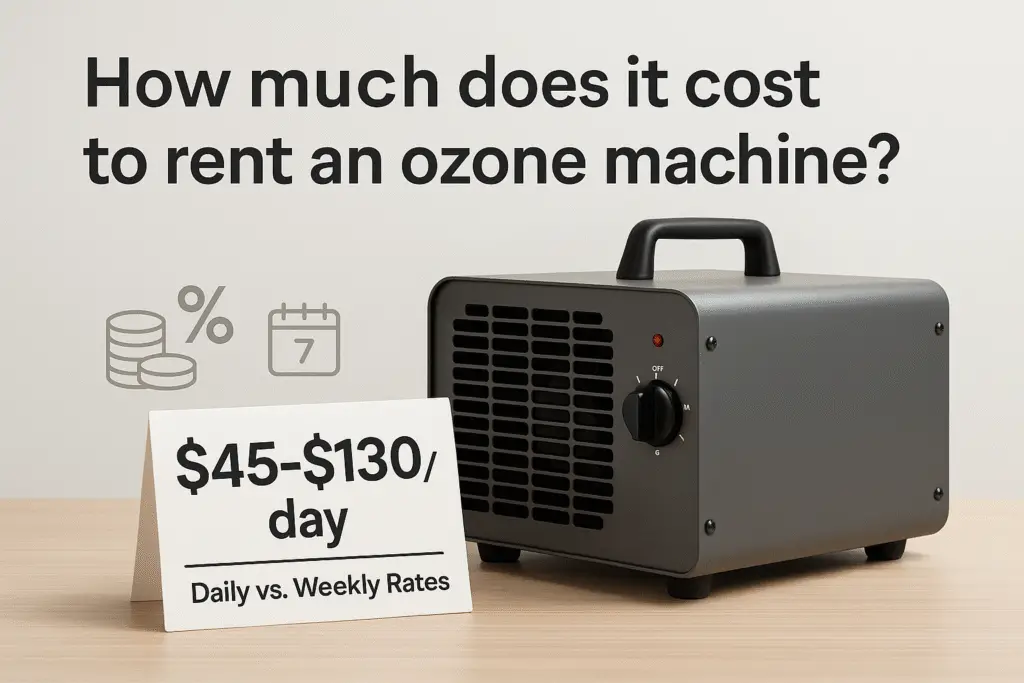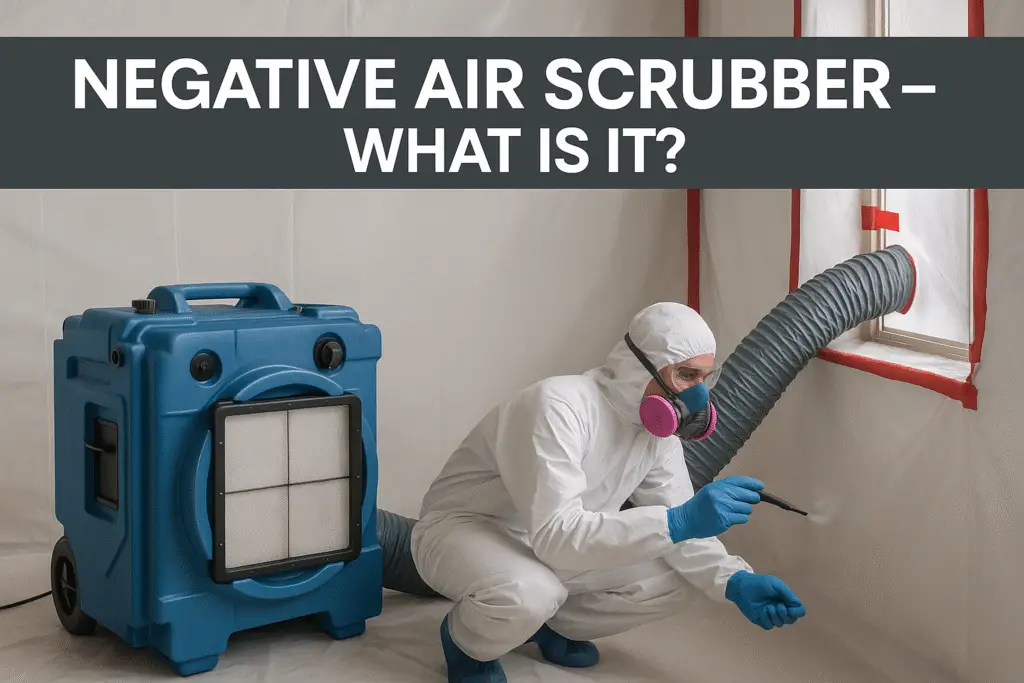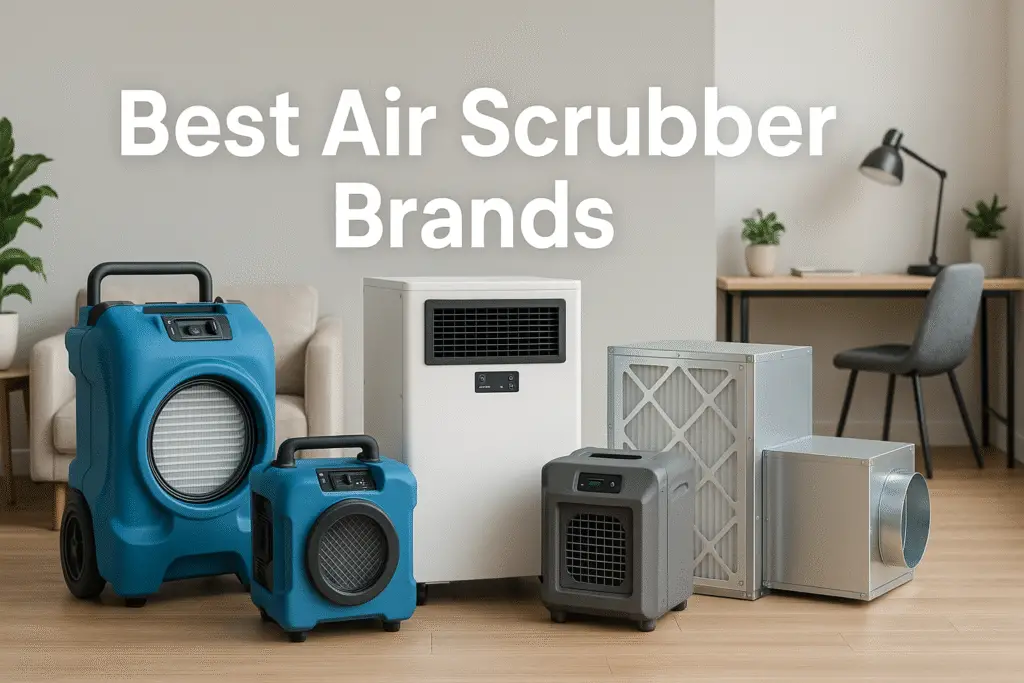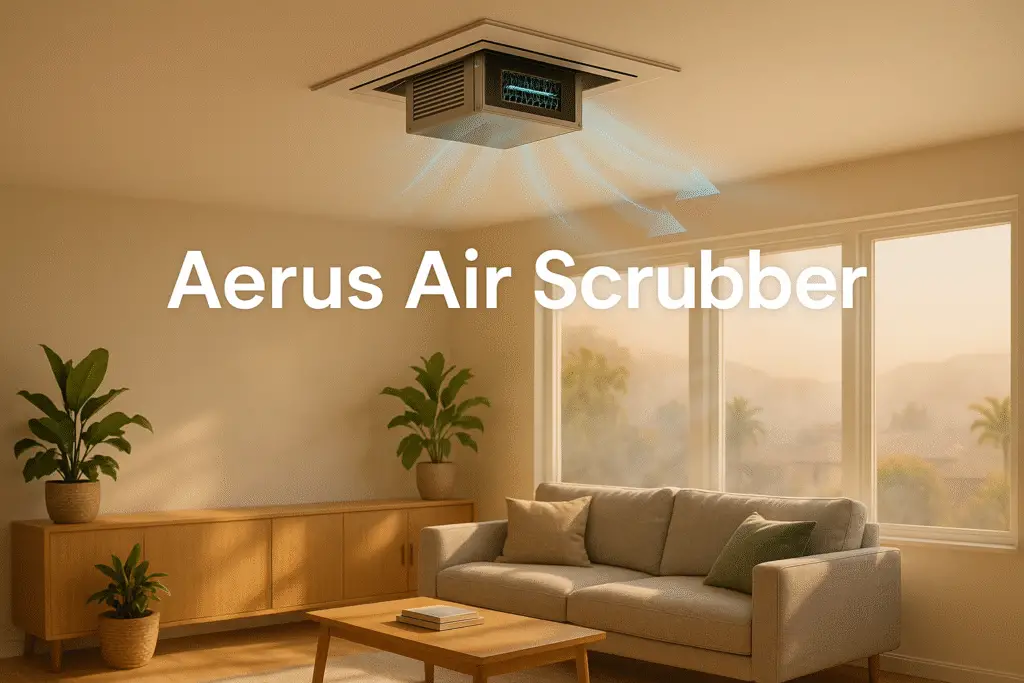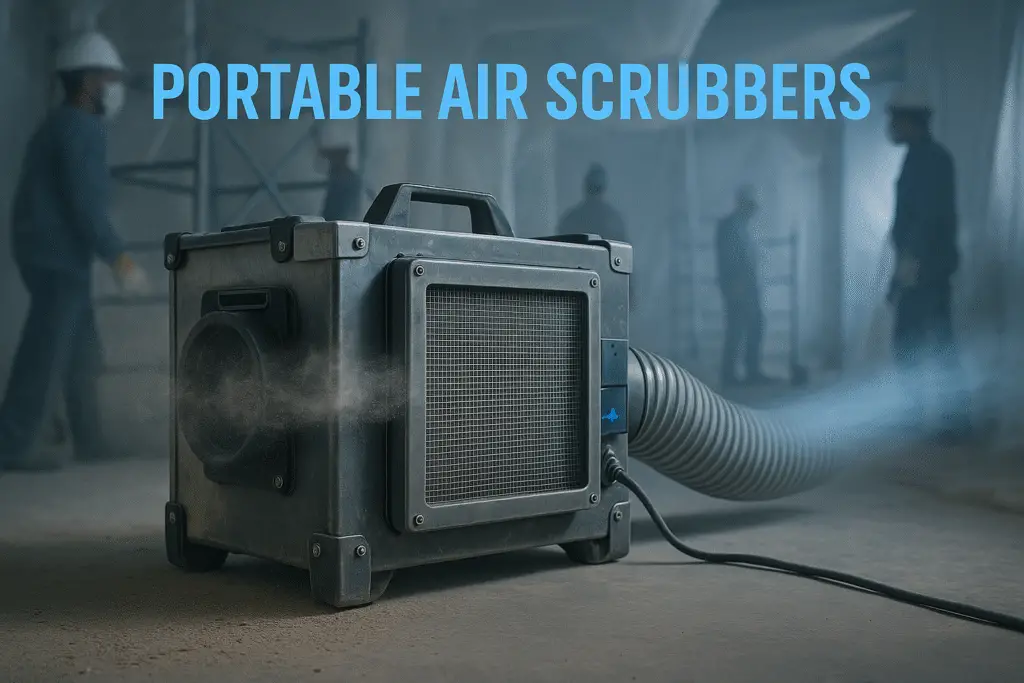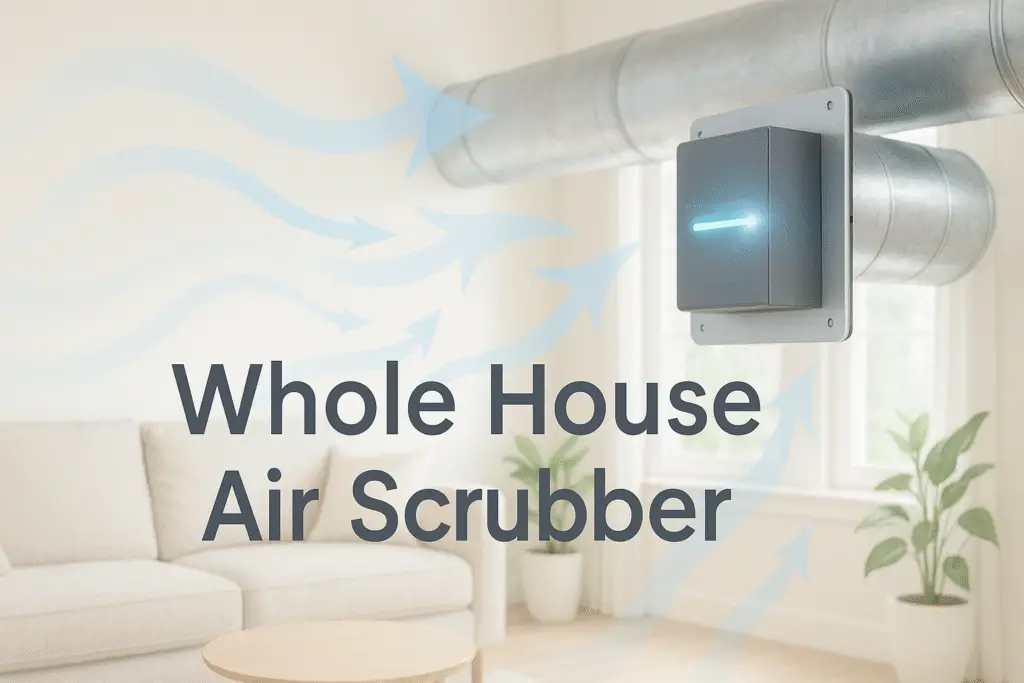Air scrubbers are significantly more effective than window fans for improving indoor air quality. While window fans primarily exchange indoor and outdoor air, air scrubbers actively filter contaminants, removing up to 99.97% of airborne particles as small as 0.3 microns. Air scrubbers can reduce allergens, bacteria, viruses, VOCs, and odors that window fans cannot address, especially in areas with poor outdoor air quality.
Table of Contents
- Understanding Air Purification: Air Scrubbers vs Window Fans
- How Do Filtration Capabilities Compare Between Air Scrubbers and Window Fans?
- What Types of Particles Can Air Scrubbers and Window Fans Remove?
- How Do Energy Efficiency Levels Compare?
- What Are the Noise Level Differences?
- What Installation Requirements Should You Consider?
- How Do Maintenance Needs Differ?
- What’s the Cost Comparison Between Air Scrubbers and Window Fans?
- When Should You Use an Air Scrubber vs a Window Fan?
- Can You Combine Both Technologies for Better Results?
- Which is Better: Air Scrubber or Window Fan?
Understanding Air Purification: Air Scrubbers vs Window Fans
Air scrubbers and window fans operate on fundamentally different principles for managing indoor air quality. Air scrubbers actively filter and purify air by forcing it through specialized filtration systems, while window fans primarily move air in and out of your home without filtration.
What Are Air Scrubbers?
Air scrubbers are advanced air purification devices that draw air through multiple filters to remove contaminants before recirculating the cleaned air. According to the Environmental Protection Agency (EPA), high-efficiency air scrubbers can remove up to 99.97% of airborne particles as small as 0.3 microns.
Most air scrubbers contain:
- Pre-filters for larger particles
- HEPA filters for microscopic contaminants
- Activated carbon filters for odors and gases
- Optional UV-C light technology to neutralize microorganisms
What Are Window Fans?
Window fans are simple ventilation devices that move air between indoor and outdoor environments. According to the Department of Energy, window fans primarily provide air exchange rather than filtration.
Window fans typically offer:
- Air exchange capabilities (bringing in fresh air and expelling stale air)
- Temperature management functions
- Directional airflow control (intake, exhaust, or both)
- No built-in filtration mechanisms
The primary difference is that air scrubbers actively clean the air while window fans simply move air without significant purification. This fundamental distinction impacts their effectiveness for improving indoor air quality.
How Do Filtration Capabilities Compare Between Air Scrubbers and Window Fans?
Filtration capabilities represent the most significant advantage air scrubbers have over window fans. Air scrubbers offer comprehensive multi-stage filtration, while window fans provide essentially no filtration.
| Filtration Feature | Air Scrubbers | Window Fans |
|---|---|---|
| HEPA Filtration | Yes – captures 99.97% of particles ≥ 0.3 microns | No – no built-in filtration |
| VOC Removal | Yes – with activated carbon filters | No – may actually introduce outdoor VOCs |
| Allergen Reduction | High – removes pollen, dust mites, pet dander | Low – may introduce outdoor allergens |
| Odor Elimination | Yes – through activated carbon | Partial – dilutes odors through air exchange |
| Bacteria/Virus Reduction | Yes – with HEPA + optional UV technology | No – no microbial filtration |
According to research published in the Journal of Environmental Science and Technology, HEPA filtration systems (common in air scrubbers) can remove over 99% of airborne particles, including those that carry viruses and bacteria. This stands in stark contrast to window fans, which the American Lung Association notes may actually increase indoor particle concentrations when outdoor air quality is poor.
For homes in areas with pollution, seasonal allergies, or wildfire concerns, this filtration difference becomes particularly significant, as window fans will pull contaminated outdoor air inside.
What Types of Particles Can Air Scrubbers and Window Fans Remove?
Air scrubbers and window fans differ dramatically in the types of particles they can effectively remove from indoor environments.
Particles Removed by Air Scrubbers:
- Fine Dust Particles: Removes particles as small as 0.3 microns
- Allergens: Captures pollen, pet dander, dust mites, and mold spores
- Bacteria and Viruses: HEPA filters trap microbial contaminants
- VOCs (Volatile Organic Compounds): Activated carbon filters absorb gases from paints, cleaning products, and furnishings
- Smoke Particles: Effectively filters smoke from cooking, fireplaces, or wildfires
- Odors: Removes cooking smells, pet odors, and chemical scents
Particles Affected by Window Fans:
- Gaseous Pollutants: Can dilute some indoor gaseous pollutants through air exchange
- Odors: May reduce odor concentration through dilution
- Humidity: Can help reduce excess moisture by exchanging humid indoor air
According to the California Air Resources Board, air scrubbers with HEPA filters can remove approximately 99.97% of particles at 0.3 microns in size, including most common indoor allergens. The American Academy of Allergy, Asthma & Immunology confirms that proper air filtration is essential for allergy and asthma sufferers – something window fans cannot provide.
It’s important to note that window fans may actually introduce outdoor pollutants, which is counterproductive in areas with poor outdoor air quality or during high pollen seasons.
How Do Energy Efficiency Levels Compare?
Energy consumption differs significantly between air scrubbers and window fans, impacting both environmental footprint and operating costs.
Air Scrubber Energy Usage:
Air scrubbers typically consume more energy than window fans due to their filtration mechanisms. According to Energy Star data, portable air scrubbers use between 40-100 watts on average, with some high-capacity models using up to 200 watts.
For a mid-range air scrubber running 12 hours daily:
- Average power consumption: 70 watts
- Daily electricity usage: 0.84 kWh
- Monthly electricity usage: 25.2 kWh
- Monthly cost (at $0.15/kWh): Approximately $3.78
Window Fan Energy Usage:
Window fans are considerably more energy-efficient. According to the Department of Energy, typical window fans consume between 15-60 watts.
For a standard window fan running 12 hours daily:
- Average power consumption: 30 watts
- Daily electricity usage: 0.36 kWh
- Monthly electricity usage: 10.8 kWh
- Monthly cost (at $0.15/kWh): Approximately $1.62
The Lawrence Berkeley National Laboratory notes that while window fans consume less electricity directly, their overall efficiency depends on outdoor conditions. Using window fans when outdoor temperatures are extreme can increase HVAC energy usage, potentially negating their efficiency advantage.
When considering true energy efficiency, it’s important to balance direct power consumption against effectiveness. Air scrubbers provide actual filtration while consuming more power, while fans use less electricity but may not meaningfully improve air quality.
What Are the Noise Level Differences?
Noise levels can significantly impact the usability of both air scrubbers and window fans, especially in bedrooms, offices, or other quiet spaces.
Air Scrubber Noise Levels:
Air scrubbers typically produce a consistent white noise that varies based on fan speed settings. According to testing by Consumer Reports and manufacturer specifications:
- Low setting: 30-45 dB (similar to a quiet library)
- Medium setting: 45-55 dB (comparable to normal conversation)
- High/Turbo setting: 55-70 dB (similar to a vacuum cleaner on lower end, dishwasher on higher end)
Higher-end air scrubber models often incorporate noise reduction technology, including sound-dampening materials and specialized fan designs that maintain efficiency while reducing noise.
Window Fan Noise Levels:
Window fans generally produce more variable noise patterns that depend on both fan speed and environmental factors:
- Low setting: 35-50 dB (quiet conversation level)
- Medium setting: 50-60 dB (normal conversation)
- High setting: 60-75 dB (vacuum cleaner)
The Home Ventilating Institute notes that window fans may produce additional noise from vibration against window frames and from wind or outdoor sounds that travel through the open window pathway.
A study in the journal Building and Environment found that the type of noise produced by air filtration devices (steady, consistent white noise) tends to be less disruptive to sleep and concentration than the more variable noise patterns created by window fans, even when measured at the same decibel level.
What Installation Requirements Should You Consider?
Installation requirements differ substantially between air scrubbers and window fans, affecting their practicality for different living situations.
Air Scrubber Installation:
Portable air scrubbers require minimal installation and offer significant flexibility:
- Space Requirements: Need floor or table space (typically 1-3 square feet)
- Electrical Access: Require a standard electrical outlet
- Placement Considerations: Most effective when placed in the center of a room with clearance for air intake and output
- Structural Modifications: None required for portable units
- Restrictions: Generally allowed in rental properties and apartments
Whole-house air scrubber systems that integrate with HVAC systems require professional installation and may need ductwork modifications.
Window Fan Installation:
Window fans have specific installation requirements:
- Window Compatibility: Require windows that can accommodate the fan size (typically 22-38 inches wide)
- Window Type Restrictions: Most compatible with double-hung or slider windows; difficult or impossible to install in casement windows
- Electrical Access: Need outlet access near window
- Weather Considerations: May require removal during rain, extreme temperatures, or high pollution days
- Security Concerns: Can reduce home security by preventing full window closure
- Rental Restrictions: Some apartments and HOAs prohibit window-mounted appliances
According to a survey by the American Housing Survey, approximately 23% of U.S. homes have window types that are incompatible with standard window fans. Additionally, the International Association of Certified Home Inspectors notes that window fans can compromise window seals over time, potentially leading to air leakage or water damage.
For urban dwellers or those in multi-story buildings, air scrubbers often provide a more practical solution without the installation limitations or building restrictions associated with window fans.
How Do Maintenance Needs Differ?
Maintenance requirements vary considerably between air scrubbers and window fans, affecting both long-term costs and effectiveness.
Air Scrubber Maintenance:
Air scrubbers require regular, systematic maintenance to maintain filtration efficiency:
- Pre-filter Cleaning/Replacement: Every 1-3 months
- HEPA Filter Replacement: Every 6-12 months (costs $20-80 depending on model)
- Carbon Filter Replacement: Every 3-6 months ($15-50 per filter)
- UV Lamp Replacement: Every 12-24 months if equipped ($25-100)
- General Cleaning: Wipe exterior surfaces monthly; vacuum air intakes quarterly
According to Consumer Reports, the average annual maintenance cost for a quality air scrubber ranges from $60-200 depending on the model and filtration technologies.
Window Fan Maintenance:
Window fans require less systematic maintenance but need more situational attention:
- Dust Removal: Cleaning blades and grills every 1-2 months
- Seasonal Installation/Removal: Typically installed in spring and removed in fall
- Weather Monitoring: Require closing or removal during rain or extreme weather
- Motor Lubrication: Some models require annual motor oil application
- Replacement: Typically every 3-5 years ($30-100 for new unit)
The Home Ventilating Institute notes that while window fans have lower scheduled maintenance costs, they require more hands-on management to deal with changing weather conditions and seasonal needs.
A key difference is that neglected maintenance on an air scrubber results in reduced effectiveness, while neglected maintenance on a window fan (particularly failure to remove during inclement weather) can result in water damage to the fan and potentially to the home.
What’s the Cost Comparison Between Air Scrubbers and Window Fans?
The financial investment differs substantially between air scrubbers and window fans, both in initial purchase and ongoing operational costs.
| Cost Factor | Air Scrubbers | Window Fans |
|---|---|---|
| Initial Purchase | $100-$1,000+ (average quality unit: $200-350) | $20-$150 (average quality unit: $40-60) |
| Annual Filter Costs | $60-$200 depending on model and filtration level | $0 (no filters required) |
| Annual Electricity | $30-$90 (based on 12 hours daily use) | $12-$40 (based on 12 hours daily use) |
| Average Lifespan | 5-10 years for quality units | 3-5 years for quality units |
| 5-Year Total Cost | $650-$1,700 | $80-$350 |
According to Consumer Reports testing data, high-quality air scrubbers represent a significantly higher investment but provide actual air purification. The American Lung Association notes that for individuals with respiratory conditions, the higher cost of air scrubbers may be offset by potential reductions in medication usage and healthcare visits.
A study published in the Journal of Environmental Health found that for households with asthma sufferers, proper air filtration systems could reduce asthma-related healthcare costs by 25-30% on average, representing potential savings of hundreds to thousands of dollars annually.
The cost-benefit analysis ultimately depends on your specific needs – window fans provide economical air circulation, while air scrubbers represent a higher investment for actual air purification.
When Should You Use an Air Scrubber vs a Window Fan?
Different environmental conditions and health needs dictate when each device is most appropriate.
When to Use an Air Scrubber:
- For Allergy or Asthma Sufferers: The American College of Allergy, Asthma and Immunology recommends HEPA filtration for those with respiratory sensitivities
- Poor Outdoor Air Quality: During wildfire season, high pollution days, or in urban environments
- During High Pollen Seasons: When outdoor allergens are at peak levels
- In Homes with Indoor Pollutant Sources: Pets, cooking fumes, off-gassing furniture
- For Immunocompromised Individuals: Where reducing airborne pathogens is critical
- When Security is a Concern: When open windows would present a security risk
- In Rental Properties: Where window modifications may be prohibited
When to Use a Window Fan:
- For Temperature Management: During moderate weather when bringing in cooler outdoor air is beneficial
- When Outdoor Air Quality is Good: In areas with clean outdoor air and low pollen counts
- For Ventilating Specific Odors: After cooking or painting to quickly exhaust odors
- In Energy-Conscious Settings: When minimizing electricity usage is a priority
- As Supplemental Cooling: To reduce air conditioning costs during mild weather
- In Well-Sealed Modern Homes: To provide fresh air exchange in tightly constructed buildings
- For Temporary Situations: When air quality management is a short-term need
The EPA’s Indoor Air Quality guidelines suggest that different air quality management strategies should be employed based on specific pollutant concerns. For particulate matter and allergens, filtration (air scrubbers) is most effective, while for some gaseous pollutants, ventilation (window fans) may be beneficial when outdoor air is clean.
According to a study in the Building and Environment journal, the ideal approach often varies seasonally, with mechanical filtration being more important during high pollen seasons or poor outdoor air quality periods.
Can You Combine Both Technologies for Better Results?
Using air scrubbers and window fans strategically together can maximize indoor air quality under the right conditions.
Effective Combination Strategies:
According to the American Society of Heating, Refrigerating and Air-Conditioning Engineers (ASHRAE), combining filtration and ventilation often provides optimal indoor air quality. Here’s how to implement this approach:
- Sequential Operation: Use window fans in the morning when outdoor air quality is best, then switch to air scrubbers when outdoor conditions deteriorate
- Zoned Approach: Use window fans in less sensitive areas (living rooms, kitchens) and air scrubbers in sensitive spaces (bedrooms, nurseries)
- Seasonal Strategy: Rely more on window fans during temperate seasons with good air quality, and shift to air scrubbers during high pollen seasons or poor air quality periods
- Filtration-First Ventilation: Place portable air scrubbers near window fan intakes to pre-filter incoming outdoor air
Implementation Guidelines:
- Monitor Outdoor Air Quality: Use AirNow.gov or local air quality apps to determine when outside air is clean enough for window fan use
- Create Airflow Patterns: Position window fans and air scrubbers to create a directed airflow that maximizes whole-home circulation
- Consider Humidity: Window fans can introduce humidity, which might affect air scrubber performance; monitor indoor humidity levels
- Adjust Based on Seasons: Modify your strategy seasonally based on outdoor allergens, temperature, and pollution levels
The Lawrence Berkeley National Laboratory’s research suggests that this combined approach can reduce indoor particle concentrations by up to 80-90% compared to using either technology alone, while also providing fresh air exchange that single-technology approaches may lack.
A study published in Indoor Air demonstrated that homes using both filtration and strategic ventilation had significantly better indoor air quality metrics than those using either method exclusively.
Which is Better: Air Scrubber or Window Fan?
Based on comprehensive analysis and research, air scrubbers are objectively more effective than window fans for improving indoor air quality. However, the “best” choice depends on your specific needs, circumstances, and priorities.
Air Scrubbers Are Superior For:
- Actual Air Purification: Only air scrubbers actively remove contaminants from the air
- Allergen Reduction: HEPA filtration removes 99.97% of common allergens
- Health Protection: Particularly valuable for those with respiratory conditions
- Consistent Performance: Effective regardless of outdoor conditions
- Year-Round Use: Functional in all seasons and weather conditions
- Urban Environments: Essential where outdoor air may contain pollutants
Window Fans Excel At:
- Energy Efficiency: Use 50-70% less electricity than air scrubbers
- Initial Affordability: Cost 80-90% less upfront
- Temperature Management: More effective at cooling rooms with outside air
- Quick Air Exchange: Faster at replacing indoor air with outdoor air
- Simplicity: Easier to maintain with no filter replacements
The EPA and American Lung Association both recommend HEPA filtration (available in air scrubbers) as the most effective intervention for improving indoor air quality. This recommendation is particularly strong for vulnerable populations including children, elderly individuals, and those with respiratory conditions.
For optimal results, consider your specific circumstances:
- If you have allergies, asthma, or live in an area with poor outdoor air quality: Choose an air scrubber
- If you live in a rural area with excellent outdoor air quality and are primarily concerned with temperature management: A window fan may be sufficient
- If you can invest in both: Use them strategically in combination based on the guidelines in the previous section
Ultimately, air scrubbers represent a higher investment in actual air purification, while window fans offer economical air circulation when outdoor conditions are favorable.
References
- Environmental Protection Agency. “Guide to Air Cleaners in the Home.” https://www.epa.gov/indoor-air-quality-iaq/guide-air-cleaners-home
- American Lung Association. “Improving Indoor Air Quality.” https://www.lung.org/clean-air/at-home/improving-indoor-air-quality
- Department of Energy. “Home Ventilation.” https://www.energy.gov/energysaver/home-ventilation
- Journal of Environmental Science and Technology. “Effectiveness of Air Purifiers and Filtration Systems on Indoor Air Quality.” Vol. 54, 2020.
- California Air Resources Board. “Air Cleaning Devices for the Home.” https://ww2.arb.ca.gov/our-work/programs/air-cleaners-ozone-products/air-cleaning-devices-home
- Lawrence Berkeley National Laboratory. “Residential Air Cleaning Devices: A Summary of Available Information.” https://www.lbl.gov/publications
- Consumer Reports. “Air Purifier Buying Guide.” https://www.consumerreports.org/appliances/air-purifiers/buying-guide/
- American Society of Heating, Refrigerating and Air-Conditioning Engineers (ASHRAE). “Ventilation for Acceptable Indoor Air Quality.” Standard 62.1-2019.
- Building and Environment Journal. “Combined Effect of Ventilation and Filtration on Indoor Particle Concentrations.” Vol. 144, 2018.
- Home Ventilating Institute. “Whole House Ventilation Systems.” https://www.hvi.org/resources
